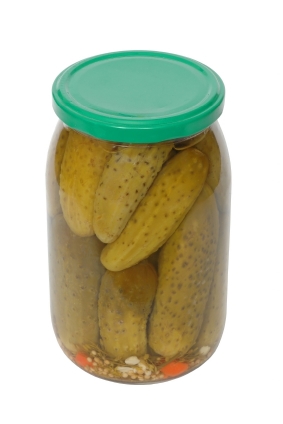We've all heard the stories about ultra-marathoners, triathletes, and soldiers who have died as a result of consuming too much water. Clearly, over-hydration can be as dangerous to your health as under-hydration. So what does a sweaty athlete need to know about staying adequately hydrated without stomach sloshing?
Here are a few "droplets" of hydration information to help you quench your thirst, perform well, and stay out of the medical tent when you are engaging in extended exercise in hot weather.
- Our bodies can deal with transient underhydration lasting from 4 to 8 hours. By contrast, chronic dehydration leads to health issues, such as happens when elderly people are trapped in hot apartments during a heat wave.
- Most athletes feel thirsty at about 2% dehydration. At that point, they'll start looking for water. Ultramarathon runners can maintain performance at 3% dehydration. (To determine your percent dehydration, weigh yourself naked before and after your workout. A one-pound drop equates to a loss of 16 ounces of sweat; 2% dehydration equates to a 3-pound sweat loss for a 150-lb. person.)
- Thirst is a powerful fluid regulator. Yet most contend drinking on a schedule can help endurance athletes maintain proper hydration, as long as they do not aggressively overhydrate, but rather replace fluids according to their sweat losses (as learned during training via pre-post exercise weigh-ins).
- Exercise-induced hyponatremia (low blood sodium) occurs when athletes drink excessively during prolonged exercise. It can also occur when even dehydrated endurance athletes lose significant amounts of sodium in sweat. Data from 669 ultramarathoners indicates 15% experienced low blood sodium. Of those, 24% were overhydrated, 36% were dehydrated, and the rest were in fluid balance (but not sodium balance). [1].
- The amount of sodium lost in sweat varies from person to person. Some people are salty sweaters. Athletes accustomed to exercising in the heat retain more sodium than unacclimatized athletes. (Compare the saltiness of your sweat on first hot day of spring vs. in the fall.)
- Athletes lose relatively more water than sodium, so under standard conditions, the blood sodium level can actually increase during exercise (unless you overhydrate). But with abnormally high sodium high losses, such as during an ultramarathon, blood sodium can be low even in a dehydrated athlete. Hence, sodium replacement can be a wise idea.
- The amount of sodium in a sports drink is small, and unable to counter the dilution of body fluids that occurs with over-drinking. The 220 mg of sodium in 16 ounces of Gatorade is far less than ~1000 mg sodium in 16 ounces of sweat loss.
- Exercise-induced muscle cramps occur in muscles that perform repetitive contractions. Athletes who get cramps tend to be those who do high intensity exercise, as well as those who have a history of cramping. Note: Many exercise scientists believe there are two types of muscle cramps: some related to fatigue, others related to sodium imbalance. The science of cramping lacks a clear consensus!
- Stopping exercise to stretch resolves muscles cramping. (Stretching also resolves nocturnal cramps.)
- A 2.5 oz. mouthful of (salty) pickle juice has been shown to alleviate muscle cramping within 90 seconds of drinking the pickle juice. I don't believe that this rapid benefit is likely due to changes in blood sodium levels; it's too quick!
- An athlete who collapses after the finish line is most likely experiencing blood pressure changes, not severe dehydration. When exercise stops, the heart stops pumping enough blood to the brain; the athlete collapses. Some experts advise to
 quickly raise the athlete's feet and pelvis above the level of their heart. This aids the return of blood to the heart and rapidly corrects the situation-without any IV fluids.
quickly raise the athlete's feet and pelvis above the level of their heart. This aids the return of blood to the heart and rapidly corrects the situation-without any IV fluids.
Tips for salty sweaters
So what's a sweaty endurance athlete supposed to do during prolonged exercise?
- Learn your sweat rate and drink accordingly. If fluid in your stomach starts "sloshing", stop drinking! The body can absorb about 600 to 1,000 ml/hour (women/ men).
- Add carbohydrates and sodium to the water to enhance fluid absorption as well as palatability and performance; and
- Consume "real" salty foods (salty pretzels, pickles, chicken broth, ham-cheese-mustard wrap) during ultraendurance events can do a fine job of providing needed electrolytes. Just don't get too aggressive with water or sodium intake-and have fun!
Nancy Clark, MS, RD, CSSD (Board Certified Specialist in Sports Dietetics) counsels both casual and competitive athletes at her office in Newton, MA (617-795-1875). Her Sports Nutrition Guidebook and food guides for new runners, marathoners, and soccer players offer additional information. They are available at www.nancyclarkrd.com. See also sportsnutritionworkshop.com.
Reference:
1. Hoffman M, Hew-Butler T, Stuempfle K. Exercise-Associated Hyponatremia and Hydration Status in 161-km Ultramarathoners. Med. Sci. Sports Exerc. 2013;45(4):784-791.








